
Explore the key factors that impact vinyl fence installation costs in Columbus, OH, including labor, materials, permits, layout, design, and yard conditions.
Vinyl offers more style opportunities than any other fencing material


One way to maximize your home's curb appeal is to start with an attractive, durable vinyl fence. There are many types of vinyl fencing, all of which can be customized with different colors, heights, and features to give your yard the look it deserves. Vinyl offers a decades-long lifespan, durability in all types of weather, and practically zero maintenance.
Whether you're after backyard privacy, a great-looking garden, security for your household, or all of the above, vinyl fencing might be what you’re looking for. This guide will introduce you to some of the many vinyl fence style options available. Learn about each and discover what might work best for you before you call your local vinyl fence installation contractor for a quote.
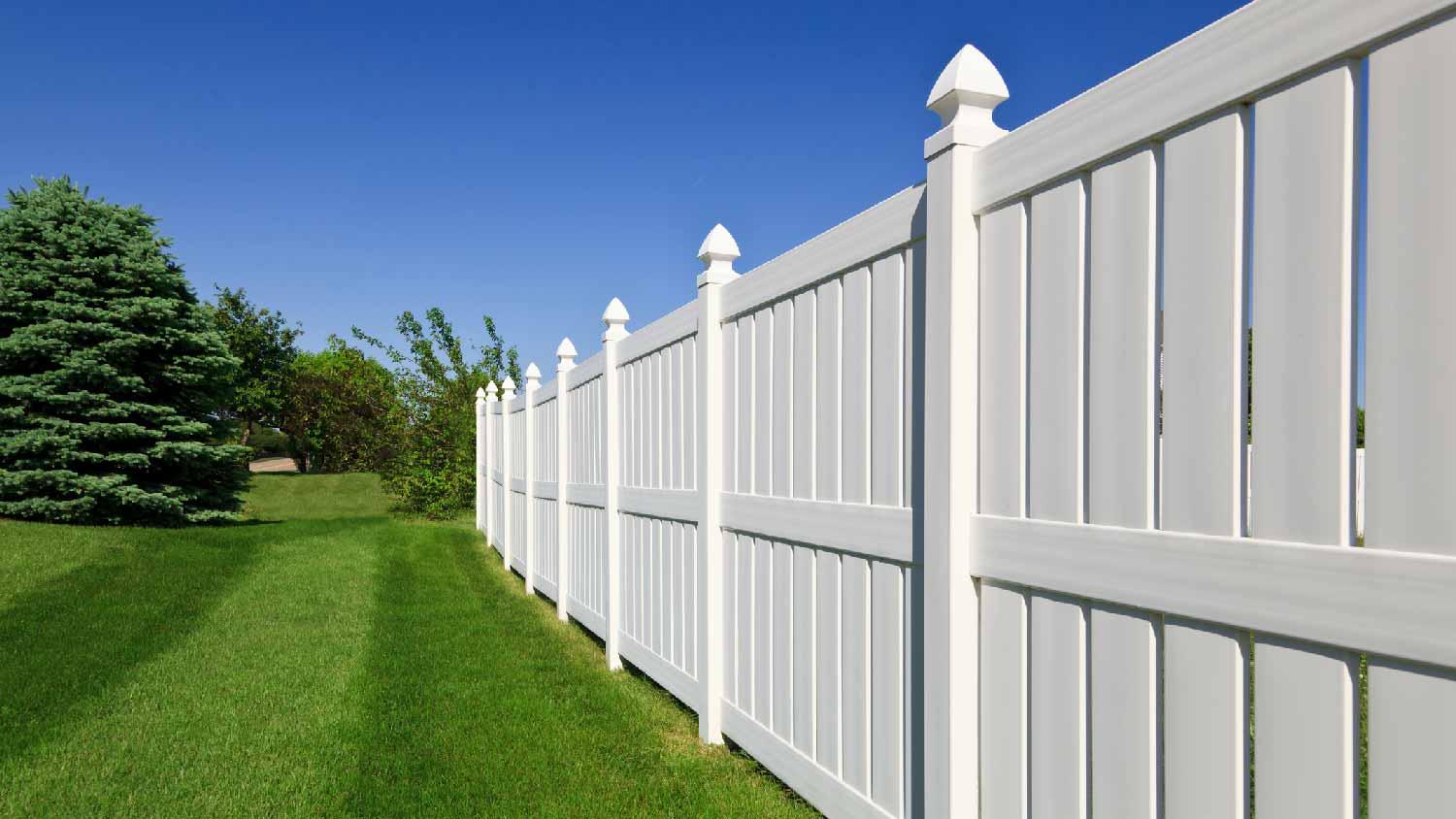
The simplest and most traditional type of vinyl fence is the vertical style. This basic design is an excellent match for both modern and classic home designs. This type of fence installation features rows of vertical vinyl fence panels side-by-side between posts with flat, horizontal rails running in even lines along the top and bottom of the fence.
The resulting tight spacing between panels means that a vertical vinyl fence will effectively secure your yard’s perimeter, containing pets and small children safe inside. You also have various height options. Shorter panels, such as those with a four-foot height, won’t block your view. Taller fences of six feet or more will turn your vertical vinyl fence into a privacy fence.
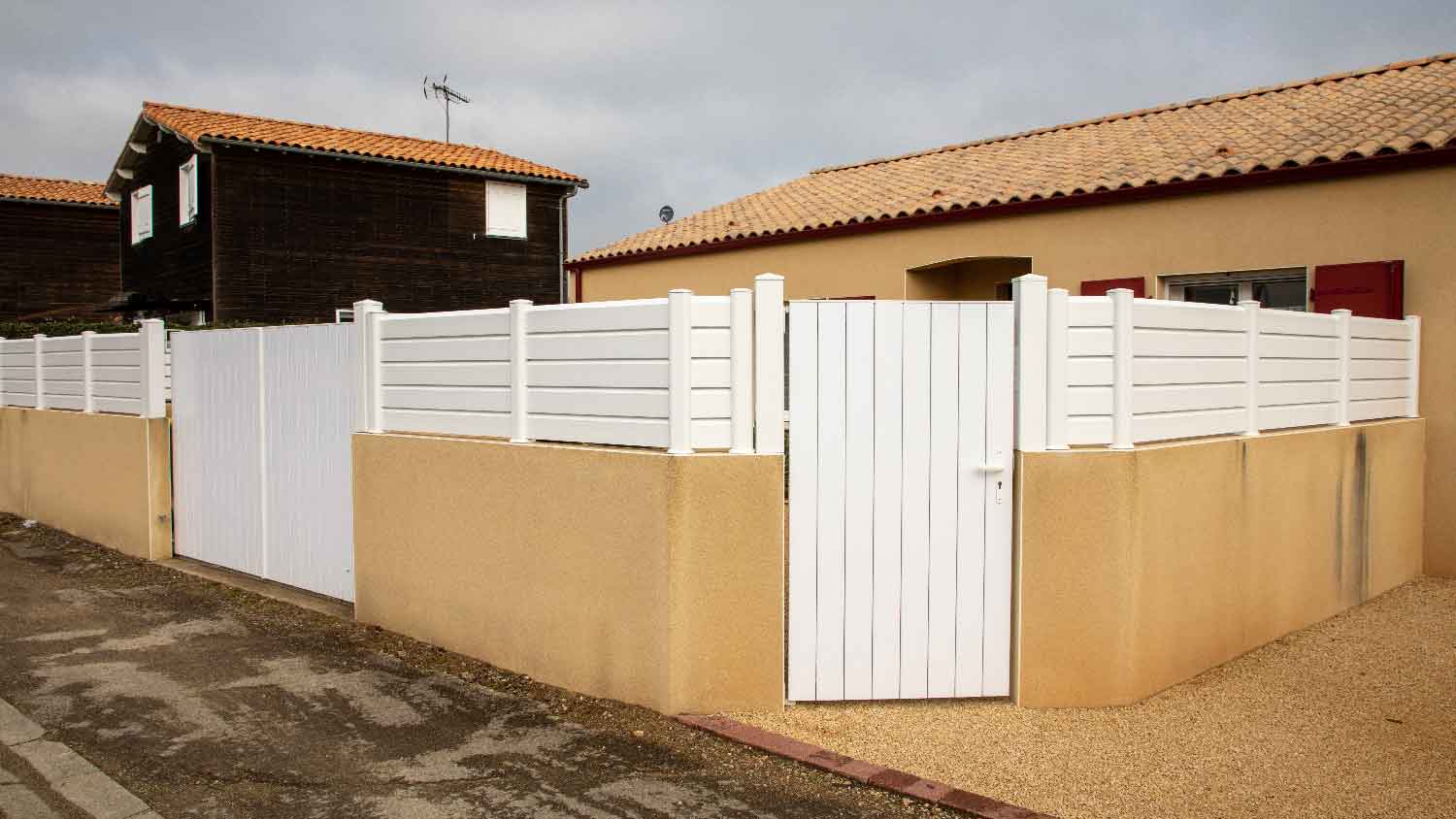
Another simple design, the horizontal style of vinyl fencing consists of panels of horizontal rails stacked between vertical posts. Spacing between the rails can vary, and some horizontal fences have little or no spacing.
Homeowners can also opt for horizontal fence slats that are slightly angled rather than straight up and down. This creates a look reminiscent of window shutters with a slight view in between slats, providing some privacy while helping your yard maintain a more open feel.

The white picket fence conjures nostalgic images of the classic American cottage and is still an excellent choice for more traditional home styles. Each vinyl panel, or picket, comes to a point at the top and is evenly spaced between posts. You’ll spend $15 to $20 per linear foot on a three- to four-foot vinyl picket fence, which comes to $1,500 to $4,500 on the average home.
Customization options within the picket fence category include different patterns,` such as scalloped or arched designs that utilize pickets of different heights in the same fence. Not only does a vinyl picket fence offer a classic look, but it's also functional for keeping small pets on your property and preventing passersby from walking on your lawn.
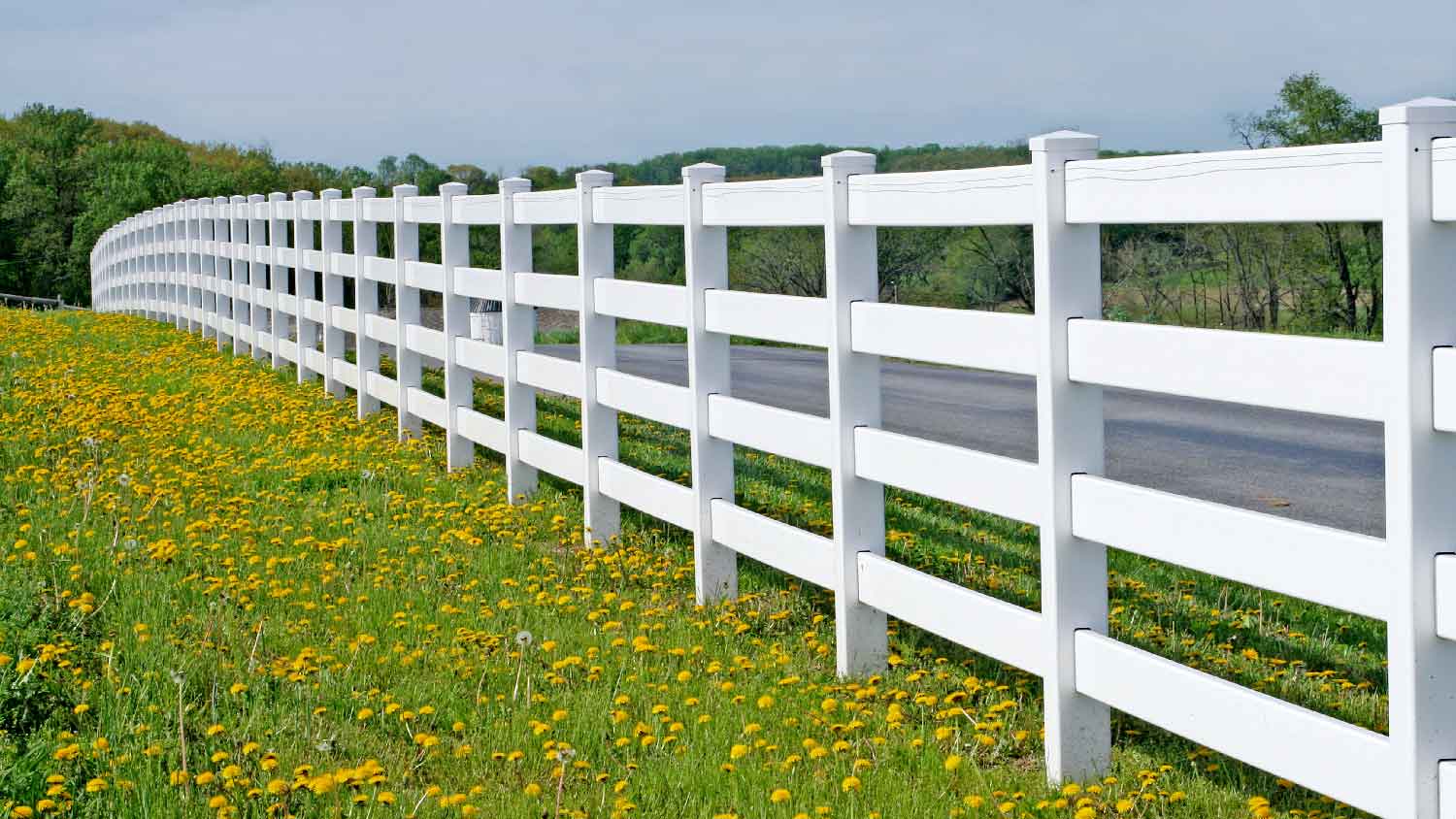
Split rail fencing goes by many names. You may hear it called ranch rail, horse rail, three-rail, or post and rail fencing. A vinyl ranch rail fence offers an affordable, modern take on a rustic countryside classic. Expect to pay $15 to $25 per linear foot, or $1,500 to $7,500 on average, for a split rail vinyl fence.
The term split rail refers to the space between horizontal rails in the fence. Most of the time, you'll see two, three, or four rails between posts. These fences don't offer much security, but they also won't block your view. A vinyl split rail fence is a minimalist way to mark your property's perimeter that many homeowners associations approve.
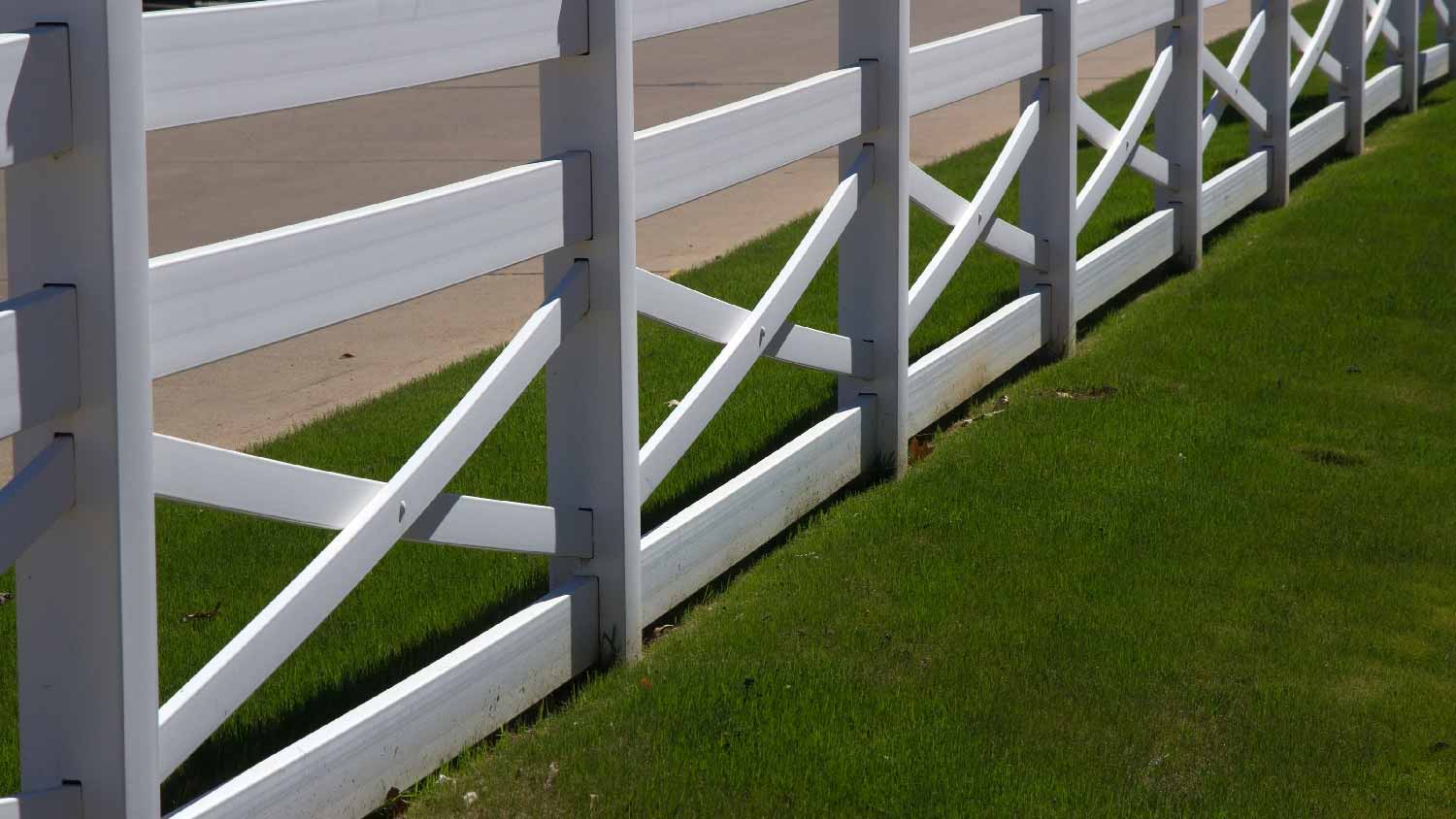
While technically a type of post and rail design, the crossbuck style puts a distinctive twist on this classic country ranch look. Crossbuck vinyl fencing features a horizontal rail on both the top and bottom, as well as two rails that cross in the middle in the shape of an "X." While traditionally used for livestock or horses, the crossbuck style is purely decorative in residential applications.
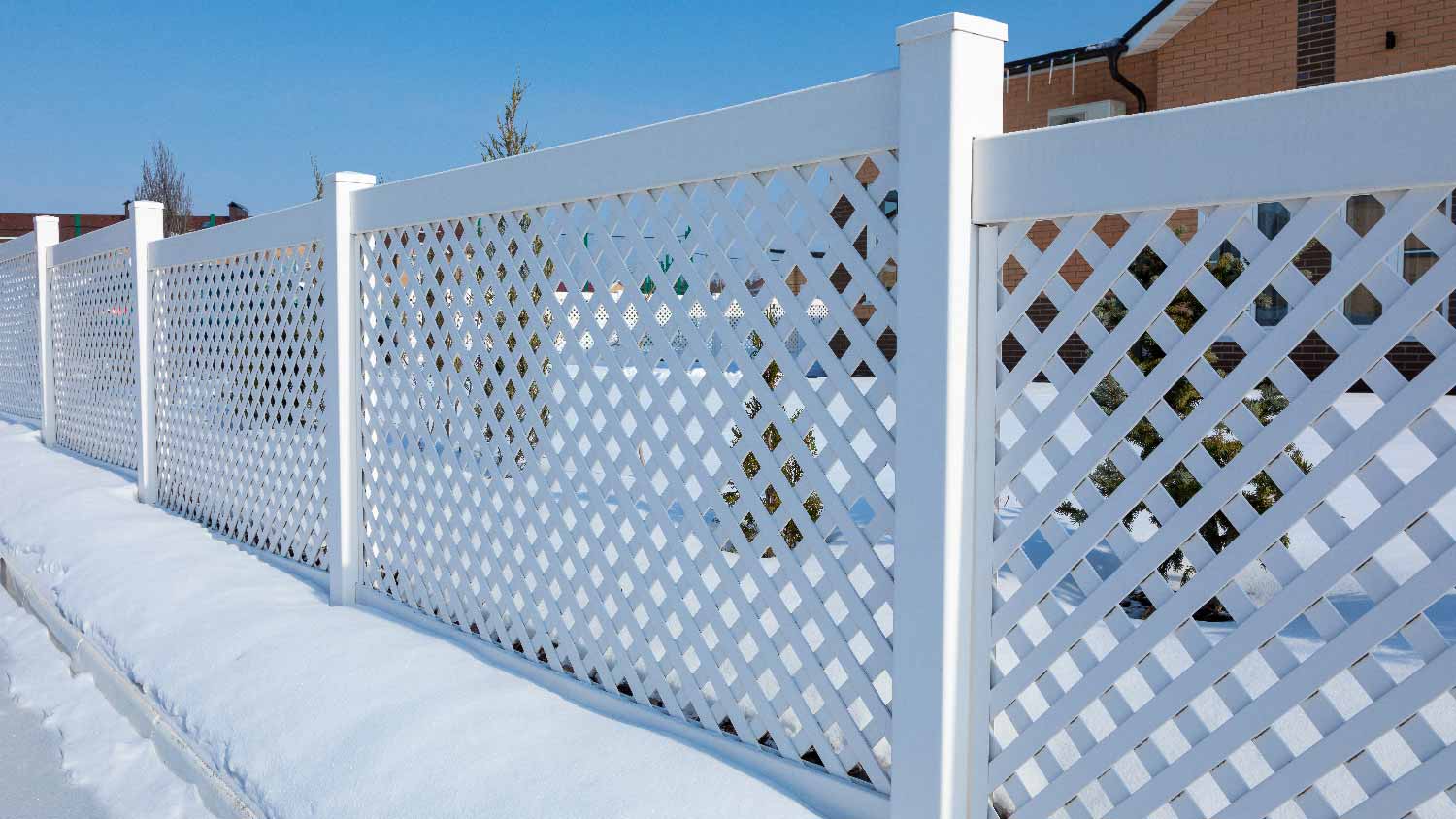
Lattice vinyl fencing designs feature an intricate pattern of crisscrossed rails, offering some privacy without sacrificing style. Vinyl lattice fencing makes a great choice for surrounding gardens or giving climbing plants a foothold in your backyard, much like a garden trellis.
There are multiple ways to incorporate a lattice pattern into your vinyl fence. Full lattice panels give you a more consistent look with a slightly better view, but the panels also tend to be thinner than other vinyl rails. For a sturdier option, consider topping more traditional vertical or horizontal rails with lattice accents.
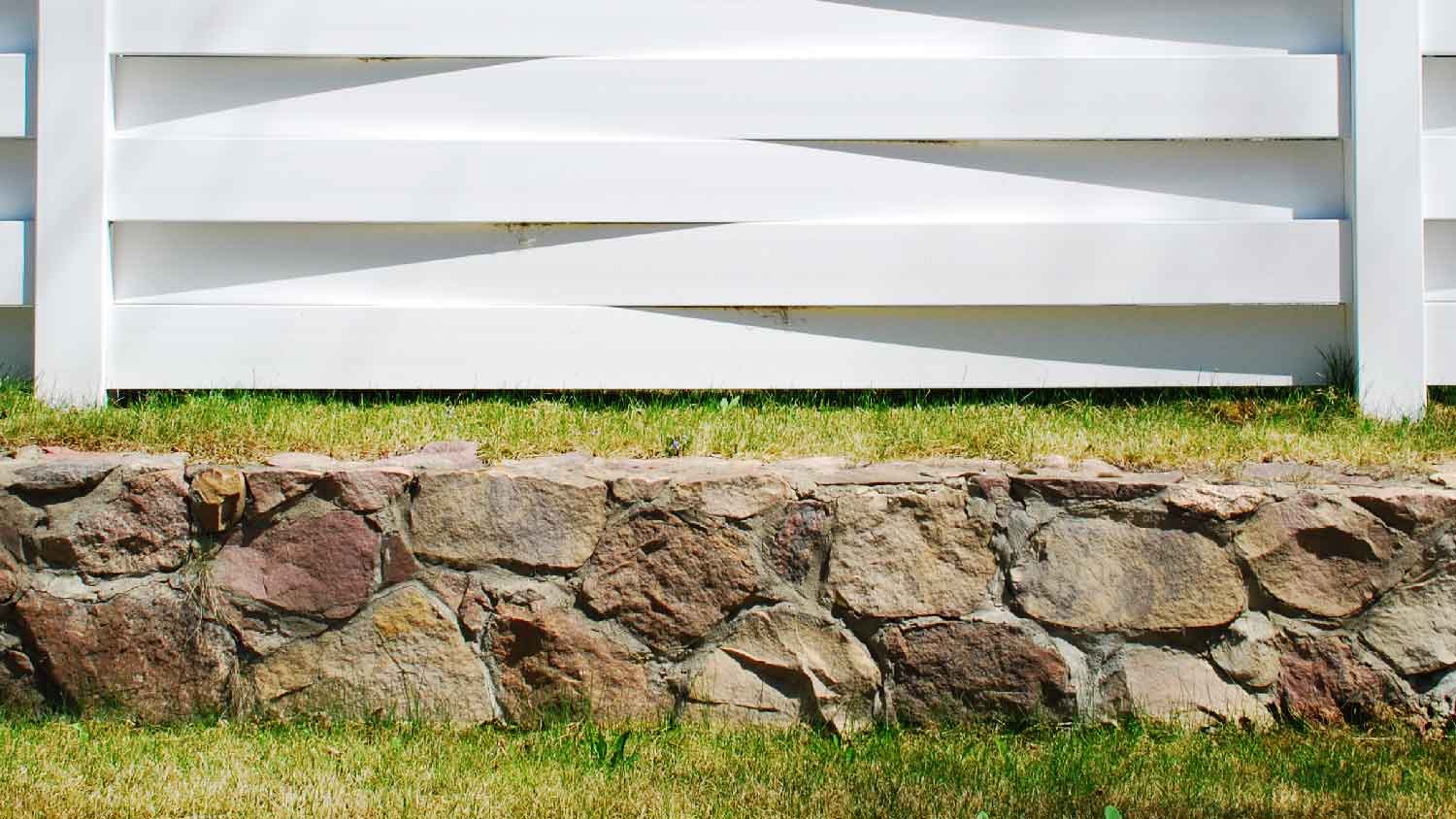
PVC fencing has opened the door to making complex, modern fence designs affordable for more homeowners. One great example is the basketweave vinyl fence. This style features horizontal rails, each of which curves opposite of those directly parallel to it. The result is a unique effect that makes the rails seem woven together like a basket.
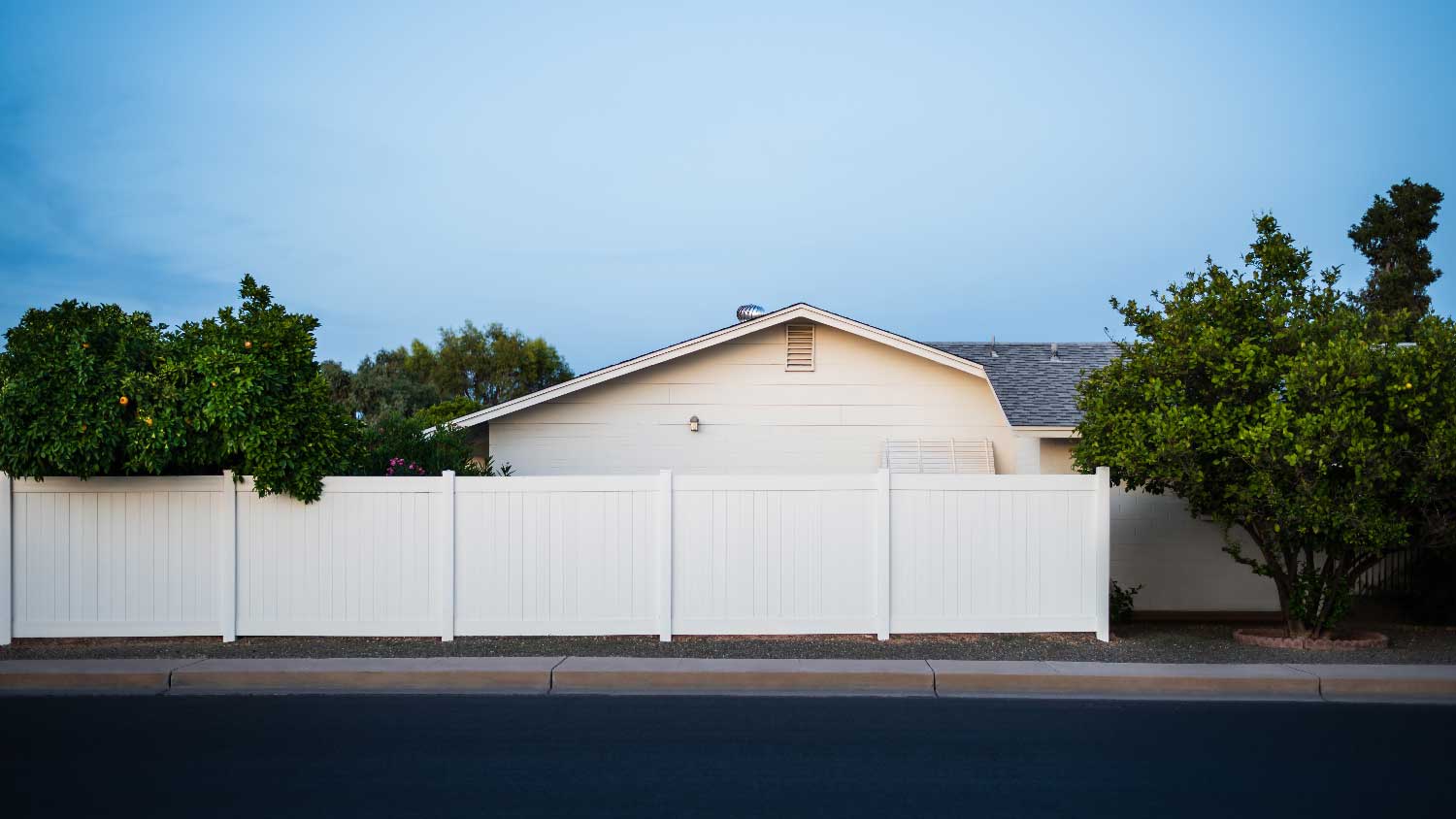
Vinyl privacy fences vary in style, but what they do have in common is a solid base and substantial height that help to block noise and prevent neighbors from seeing into your yard.
These fences are perfect for creating cozy outdoor spaces separate from the world around them. If security is one of your priorities, vinyl is also a great material for privacy fences, thanks to its durability. A privacy vinyl fence costs $25 to $60 per linear foot, or $3,000 to $18,000 on average.
With so many types of vinyl fencing to choose from, how do you settle on the right kind for your property? There are several factors to consider when choosing the best type of vinyl fence for your home and needs.
A vinyl fence can offer many different benefits, depending on the type. Are you looking to simply mark your property lines, keep neighborhood dogs and cats out of your garden beds, or create a private backyard oasis? More privacy calls for taller fences with smaller openings between the vinyl pickets and rails.
For containing horses or other livestock, or simply achieving a rustic look, split rail is a good choice. Consider your “why” for building a vinyl fence, and that will help guide you to the best type for your needs.
Sometimes, the decision can simply come down to aesthetics. If you’ve always dreamed of owning a home with a cute white picket fence around the front gardens, then a vinyl picket fence could be the best option for your landscaping plans.
If you want a more rustic feel, consider a split rail or crossbuck style. When shopping for vinyl fencing, keep in mind how each style will look in front of your home.
Vinyl fence installation costs $2,350 to $5,960 on average, but the total will depend on the type of fence, size of fence area, and number of gates and other accessories. Expect to pay $15 to $40 per linear foot. Simpler, shorter styles like picket or split rail will cost less than a privacy vinyl fence. Gates cost $880 to $3,820 each, so the more entry points you want, the more the project will cost.
Households with kids and pets need taller fences with less space between pickets for better safety. Fences like a vertical vinyl fence, a horizontal fence with minimal spacing, or a full privacy fence offer better safety if you’re looking to contain children and pets in the yard.
Many homeowners consider a vinyl fence for privacy, so consider options with fewer openings, like a vertical vinyl fence or a privacy screen. Taller basketweave vinyl fences can also offer more privacy compared to alternatives like a picket fence or split rail.
If you live within an HOA, be sure to check the regulations to determine acceptable fence types. In many cases, a split rail or vinyl picket fence will be fine according to city regulations, but don’t assume that’s the same for your HOA. Always check and get approval before beginning your fence installation.
Some cities also have regulations on fence height, so when you apply for a permit for your fence installation, be sure to check local codes for any stipulations.
From average costs to expert advice, get all the answers you need to get your job done.

Explore the key factors that impact vinyl fence installation costs in Columbus, OH, including labor, materials, permits, layout, design, and yard conditions.

A fence can be a beautiful and functional addition to your property. Learn all the factors that determine your fence installation costs in Columbus, OH.

Get a detailed breakdown of chain link fence repair costs, including average prices, cost factors, and tips to help homeowners budget for repairs.

A leaning or damaged fence post can make your fence unstable and look unattractive. Learn who to call to fix a fence post and prevent future damage.
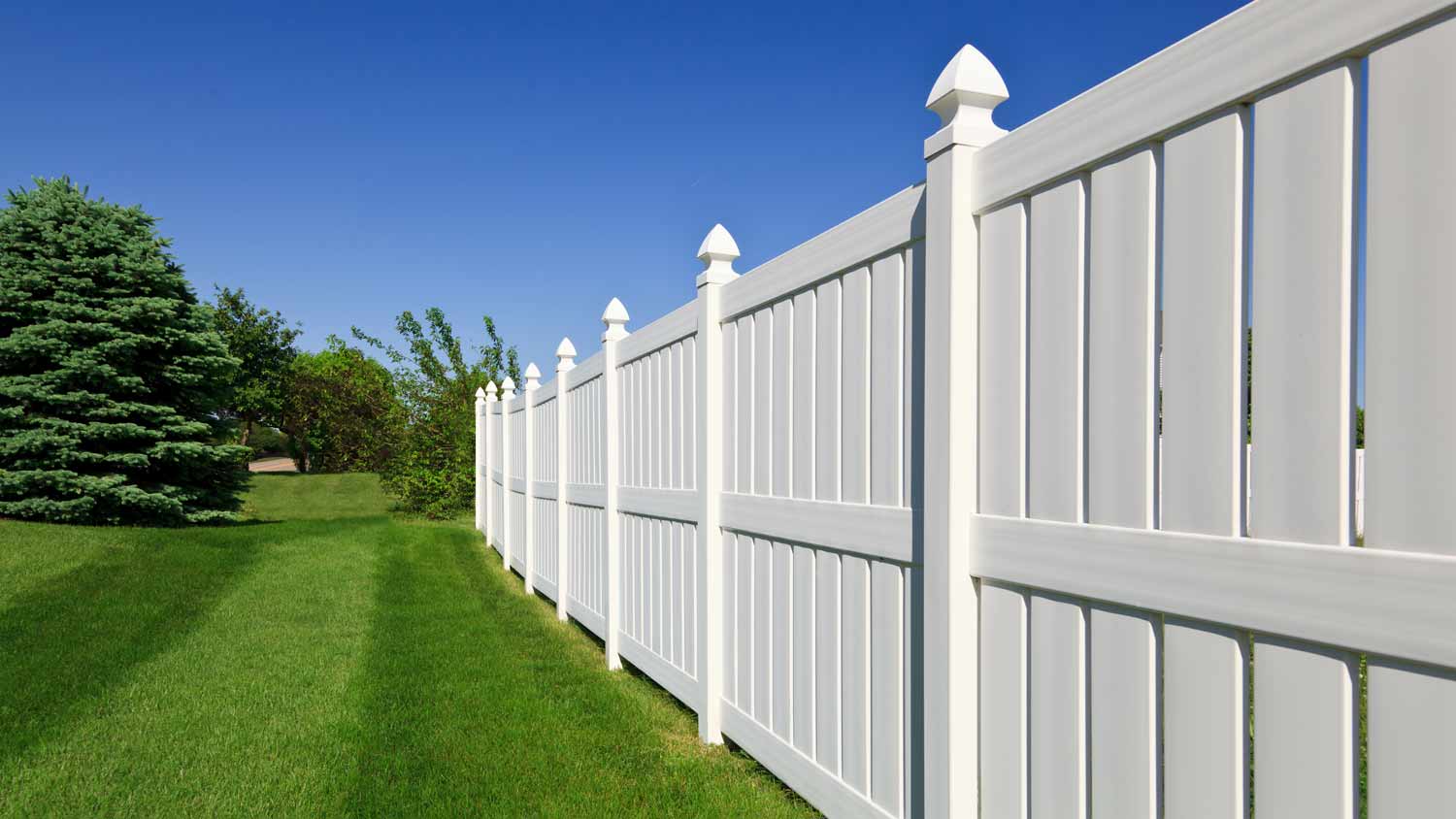
If your vinyl fence has holes, dents, or other minor damage, you can repair it with a few basic supplies. Here’s how to fix a vinyl fence in eight steps.

Wire fencing offers reliable property boundaries, livestock containment, and garden protection. Use this guide to learn how much wire fencing costs based on factors like type and material.